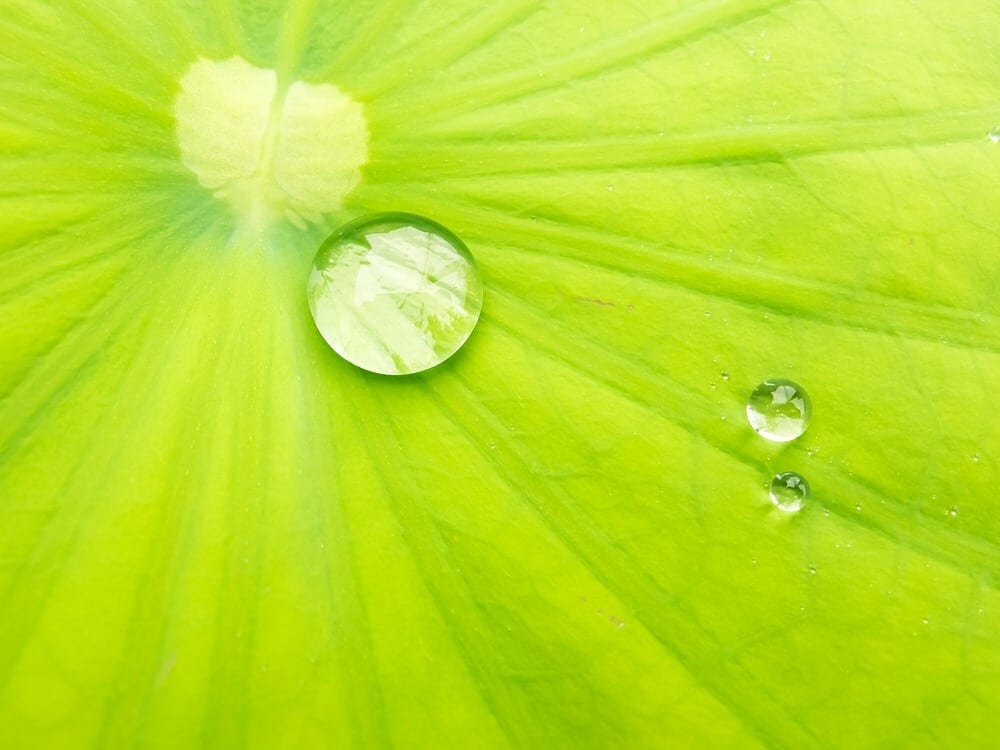Lotus Effect Surfaces
Problem
A consumer appliance company was interested in creating self-cleaning surfaces using the Lotus Effect. Such “Lotus Effect Surfaces” are known, but making them in a commercially applicable way, has remained a challenge.
Action
When starting on a new topic, it’s a good idea to do a quick but thorough search to see what is already known to avoid “reinventing the wheel”. A literature search revealed that ultrahydrophobic or superhydrophobic surfaces had been known for decades and a multitude of patents existed for making childrens toys and much more. In fact, the technology was so old that many of the patents had already expired. That was good news, as it increased our options. The so-called Lotus Effect was the discovery that superhydrophobic surfaces can be self-cleaning. When exposed to rain for example, dirt rolls off on the surface of the water droplets. There was even a commercially available paint for house exteriors so we ordered and tested that but it did not work well at all.

Solution
Superhydrophobic surfaces need to have low surface energy plus a micro or nano-scale roughness. As the commercial product had failed, I set out to make my own. A can of spray paint was found in a drawer and applied to a plastic surface. The, while still wet, the sample was dipped into a bag of hydrophobic silica so that the particles stuck to the paint. After 10 minutes, when the paint had dried, the sample was tested. It was found to be extremely water repellant and showed the Lotus Effect. Even better, it was extremely resilient showing no damage even when exposed to a jet of water so powerful that it was painful to touch. The water jet hit the Lotus Effect surface and bounced off, spraying for several meters around the lab. It was quite impressive.
In further work we then made ultrahydrophobic, Lotus Effect surfaces on concrete and clothing. We were able to pour a liter of water onto a jacket as the “bowl” and it just stayed there for days with a shiny interface between the dry fabric and the water. We showed it to people and they were stunned at the degree of water repellency we had attained. If you need to modify the surface properties of plastics, then call Phantom today. We have modified surface friction, hydrophobicity, adhesion and more using additives, coatings as well as corona and plasma treatment.
